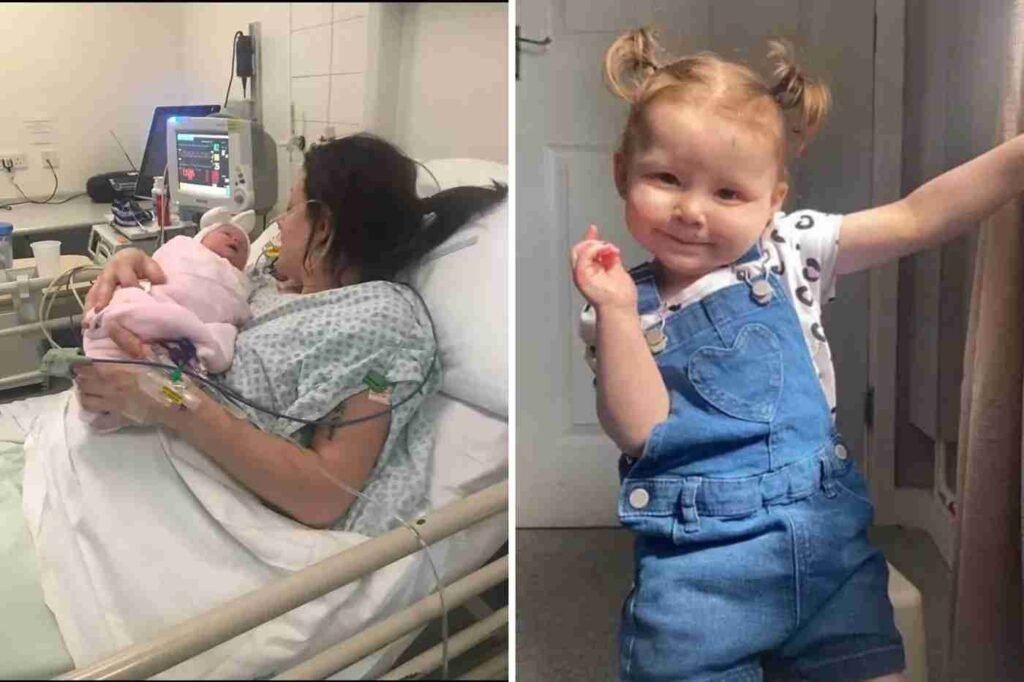It was just a normal day. I was about an hour into my shift caring for elderly patients when something in my gut just wouldn’t let me settle. I couldn’t explain it—just a deep, heavy feeling that something wasn’t right with my 2-year-old daughter, Harper-Lee.
When I’d left for work, she was a little tired. But nothing unusual—she’d spent the morning dancing to music, full of life, her sassy little self. I tucked her into my bed to nap and left her in the care of my two older daughters, Jamie-Leigh (18) and Kyla-Shannon (13). Everything seemed fine.
Then I reached into my bag, unlocked my phone, and saw it.
Dozens of missed calls. One message from Jamie-Leigh. One chilling word stood out: “blood.”
Panic hit. My first thought was that our dog must have bitten Harper. But the truth was something far, far worse.
I called Jamie-Leigh. The video call connected—and what I saw will never leave me. My baby girl was covered in blood, pouring from her mouth. I screamed. I ran. I was just two minutes away, but it felt like forever. By the time I got home, the ambulance was already there. The paramedics looked completely stunned. One of them even said they’d never seen anything like it. There was blood, but also a strange bright green fluid. No one knew what had caused it.
That morning, Harper had seemed fine. Tired, yes—but still watching TV, twirling around the room while I got ready for work. Nothing had raised alarm bells.
At the hospital, doctors initially thought her tonsils had burst—she’d struggled with septic tonsillitis in the past. She was taken into surgery. Before she was wheeled away, she looked up at me and said,
“Mommy, I need you.”
Those were the last words she ever said.
Three and a half hours later, the heart surgeon came out and delivered news I’ll never forget.
“It’s not her tonsils,” he said. “It’s a button battery.”
Somehow, one of those tiny coin-sized batteries had lodged in Harper’s esophagus. Its acid had burned a hole right through her main artery. The damage was catastrophic. The surgeon went back in to try to save her—but four hours later, he returned and said the words that shattered me:
“I’m sorry.”
I screamed. “No!” I didn’t need more details. I knew. My baby was gone.
Harper-Lee died from cardiac arrhythmia caused by the internal bleeding and tissue damage from that single battery. It happened on May 21—a date that’s frozen in my memory. It’s been four years, but I relive it every single day.
The police investigated and found that the battery had come from an LED light remote, purchased online from China. The battery compartment wasn’t secured. Harper had managed to open it, remove the battery, and swallow it—without anyone noticing.
Since then, I’ve been diagnosed with PTSD and depression. But through my grief, I’ve found a mission: making sure this doesn’t happen to anyone else.
I’ve been speaking out about the dangers of button batteries, sharing Harper’s story on social media through my account @stacybambam, and campaigning for change. I’ve worked with battery manufacturers, pushed for better safety warnings, and spoken with Parliament about updating policy.
It hasn’t been easy. I’ve been harassed online—called a murderer, blamed for what happened. But the truth is, I didn’t know. No one told me these everyday objects—things in remotes, toys, and gadgets—could be deadly.
Now, I won’t stop sharing Harper’s story. Not just for her, but for the countless other families who might still have time to prevent the same tragedy. Check your remotes. Lock up your batteries. Tell your friends.
No child should die like this.
Harper’s life was short—but I made her a promise: her legacy will be long.

